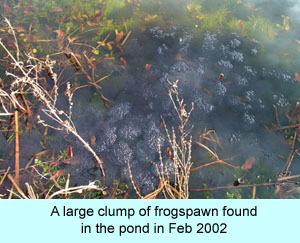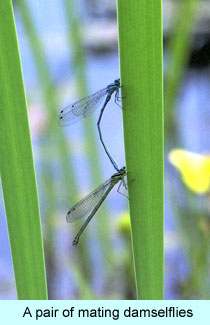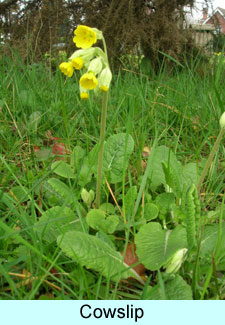
Mayford Heritage Pond

Wildlife
As has been previously mentioned, the pond and its surrounds were designed, planted and thereafter have been managed to maximize the area for its benefit to the local wildlife.
Down in the Depths!
Back in 1997 there were actually very few plants planted in the pond and over the years these have expanded, in some cases a little too well. Some species have also colonized the area naturally and by accidental introduction by the public. In the latter instance the most notable plant being Australian Swamp Stonecrop, which to put it bluntly is a plant you don't want in your ponds or lakes under any circumstances as it rapidly takes over and ultimately deprives the pond life of oxygen, and it dries out smaller ponds.
Occasionally, as part of the management, the excessive growth of some plants is removed to prevent a total coverage of the water body by emergent water plants.
Animal life in the pond took off earlier than expected when a water beetle landed on the butyl liner while it was actually being laid. Since then the amount of animal life that has colonized the pond has been quite astounding. Within a year no fewer than 15 species of water beetle had turned up as well as the uncommon Water Stick Insect. Both Greater and Lesser Water Boatmen are common species found here too.
No animals were deliberately introduced into the pond. This was so an ecosystem and food chain could develop naturally through colonization. It is virtually certain that several species hitched a ride on the plants that were introduced in to the pond though.

Nowadays, toads, frogs, and Smooth Newts all breed in the pond and can be seen throughout the year if you know where to look. One pleasantly surprising colonizer of the area, both pond and grassland, has been the Grass Snake, because a female has now successfully raised her young here every year since 2003. This shows that the pond has a stable amphibian population capable of supporting this higher predator.

In summer up to 13 species of Dragonflies may be seen, of which 9 have been seen egg-laying in the pond. They can vary from the large Broad-bodied Chaser and Emperor Dragonfly to the smaller Damselflies that include; Large Red, Common Blue, and Azure. Occasionally you might see something a little less common such as a Banded Demoiselle or Red-eyed Damselfly.
Growing in the Grassland!
Throughout the year the grassland area is home to a large array of wildlife. The existing sward structure of the area was fairly poor when the pond was created. So, again to encourage as great a diversity of wildlife as possible, a range of meadow plant species were introduced.

In early spring Primroses and Cowslips grace the fresh green grass, and there then follows a whole succession of species, including Meadow Cranesbill, Wild Carrot and Ox-eye Daisy, throughout the summer ending with Field Scabious and Common Toadflax in August.
The many plants in turn have become home, shelter, food, and a place to breed for many animals. With patience you can find animals such as: Common Shrew, Sloe Shield Bug, and Grass Snake, along with numerous species of ants, flies, beetles, bees, butterflies, moths, and bugs.
In late summer the area abounds with the call of grasshoppers and crickets. Amongst the common species are two that are starting to spread through Britain's grasslands after many years of having very restricted southeast distributions. These are the Long-winged Conehead and Roesel's Bush-cricket and it is believed that the warmer, later summers that we have had recently are partly responsible for their spread, because they mature later in the summer than most species.
VIP - very important pond
All in all Mayford Pond had in its first 10 years become an important place for the village's wildlife as it not only provides habitats for so many species in its own right, but also for species that are expanding their populations into new areas, and as a connecting site between other wetland sites in the area.
The figures below show that at least 472 species have so far colonized the pond and its surrounds further emphasizing the area's importance for wildlife. The links below lead to more information about the individual group including a table giving the entire list of observed species.
| Wildlife | No. of species | ||
| Plants | 218 | ||
| Moths | 76 | ||
| Fungi | 32 | ||
| Birds | 24 | ||
| Butterflies | 16 | ||
| Dragonflies | 14 | ||
| Slugs& Snails | 11 | ||
| Hymenoptera | 10 | ||
| Mammals | 7 | ||
| Crustaceans | 4 | ||
| Amphibians | 3 | ||
| Fish | 1 | ||
| Reptiles | 1 | ||
| Molluscs | 1 | ||
| Other Aquatic Invertebrates | 26 | ||
| Other Land Invertebrates | 29 | ||
Total So far |
473 |